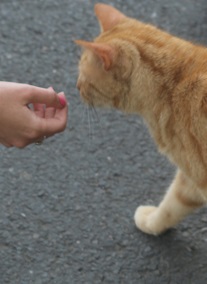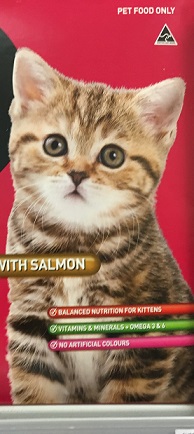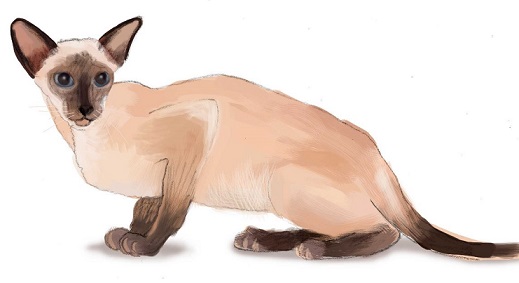Study Cats: Breeds, Care and Management
- You may study this because you simply love cats
- Perhaps you aspire to breed and show cats, or you just want to better care for one or more pet cats you have at home, or plan to get.
- Alternatively; you may work or hope to work in the pet industry -perhaps a pet shop, cattery, animal shelter, or in the supply of some other goods or services for cats.
This is a course for either amateurs or professionals. It lays a very comprehensive foundation for understanding the care and management of domestic cats, and can lead you to becoming a real expert in domestic cats.
Course Structure and Content
Lesson 1. Introduction
- Basic Feline Needs - Basic Duties of the Cat Owner
- Food and water
- Shelter and Containment
- Health care for sick cat
- Grooming
- Claw trimming
- Bathing
- Travel
- Housebreaking
- Introducing a new cat at home
- Cats with babies and children
- Cats and dogs
- Cat breeds – pedigrees and non-pedigrees
Lesson 2. Feline Biology
- Skin
- Eyes
- Ears
- Nose
- Mouth
- Digestive system
- Reproductive system
Lesson 3. Breeds
- Domestic cat breeds
- International and national associations
- Long haired breeds – characteristics, common health problems, temperaments, care, history
- Semi-long haired breeds - characteristics, common health problems, temperaments, care, history
- Short haired breeds - characteristics, common health problems, temperaments, care, history
Lesson 4. Feline Health Care
- Preventative care
- Vaccinations
- Recognising ill health
- Dealing with emergencies
- Artificial breathing and heart massage
- How to induce vomiting
- Specific situations to deal with e.g. burns, wounds, dehydration, hypothermia (and many more)
- Poisoning
- Wounds
- Bandaging
Restraining for treatment
- Transportation of the injured cat
- De-sexing
Lesson 5. Feline Illnesses
- Internal parasites
- Roundworms
- Hookworms
- Tapeworms
- Whipworms
- Lungworms
- Stomach worms
- Bladder worms
- Flukes
- Worm control
- External parasites
- Ticks
- Fleas
- Mites
- Common ailments and diseases (numerous)
- Skin disorders
Lesson 6. Feline Diet
- Introduction to foods and feedings

- Dietary options
- Free feeding
- Scheduled, portion controlled feeding
- Understanding dietary requirements
- Kittens (0-12 months)
- Pregnant and lactating cats
- Fussy cats
- Obesity and overweight cats
- Underweight cats
- Geriatric cats
- Raw diets
- Toxic foods
Lesson 7. Feline Behaviour
- Understanding the cats mind
- Personality and temperament differences
- How cats communicate
- Body language
- Sleeping routines and circadian rhythms
- Play
- Behavioural problems
- Recognise and understand aggression
- Dealing with aggression
- Inappropriate elimination
- Excessive vocalisation
- Geriatric dysfunction
- Controlling killing wildlife
- Eating disorder
- Abnormal suckling
- Separation anxiety
Lesson 8. Breeding and Raising Kittens (includes PBL Project)
- Cat breeding industry
- Ethics in animal breeding
- A brief look at genes
- Sexual behaviour
- Socialisation of kittens
- Problem based learning project – Improving Standards for Ethical Breeding
Lesson 9. Feline Services (includes PBL Project)
- Grooming services
- Professional training and handling
- Day care or boarding facilities
- Re homing and fostering
- Using cats as therapy pets
- Health care industry
- Feline therapy services – hydrotherapy, physiotherapy, massage
- Retail and manufacturing industry
- Pet funerals and memorials
- Business basics for self-employment in the feline industry
- Laws and small business
- The importance of keeping records
- Buying an established business
- Buying a franchise
- Approaches to business planning
- Problem based learning project – Starting a Small Business in the Cat Industry
Which Breed Suits You?
With over forty different breeds of cats to choose from, cat fanciers are spoiled for choice. If cats are your passion; or if you work with cats (eg. in the pet industry), this course is for you.
Cats are one of the most popular pets in the world, and have been for thousands of years.
One of the most popular breeds today is the "Siamese".
The Siamese originated from Thailand and it was for its unique looks that royalties adored this cat. Many tales tell of the passing of a royal family member, their sole would then be received by a Siamese cat. The cat was then invited to live out life in the temple alongside the monks and priests.
It is believed this breed was introduced to Britain over the 1870’s to 1880’s. It is thought that the first Siamese to be exhibited in 1871 at The Crystal Palace, London, was given a poor response by the audience and judges, however, the breed’s popularity later grew.
It was reported that the first Siamese cat introduced to America was owned by Mrs Rutherford B. Hayes (Wife of the President Rutherford B. Hayes) in 1878, and was resident to the White House.
From the 1900’s forward, the popularity of this breed grew, and is one of the top cats for short haired breeds.
Siamese cats are a medium size short haired breed that can weigh an average of 6 to 15 pounds (2.7 to 6.8 kg). Males are typically larger than the females. Their bodies are long and easily flexed with small oval paws. Their legs are slender, with their back legs being longer than their front legs. They have a triangular shaped head from the front view, with large ears and eyes that slant towards the nose.
They naturally have a short, fine coat which traditionally were a warm cream coloured with darker brown points of colour at the extremities; but over time, variations in colour have developed. Originally the cats in Thailand had eye squints and tail kinks; but these characteristics are now avoided and considered faults.
Common Potential Health Problems
There are no significant health issues however as with every breed there is a chance of genetic problems, and older cats should be checked by a vet regularly.
Siamese can live well into their teens and sometimes into their twenties. Some health issues related to the Siamese may be:
- Respiratory and dental problems relating to the shaped head.
- Crossed eyes, or kinked tail.
- Bladder stones.
- Glaucoma and progressive retinal atrophy.
- Heart problems.
- Specific types of cancers.
Personality and Temperament
Siamese are very adventurous with high energy levels and love to explore. Plenty of toys, scratching posts and climbing areas are a good idea to keep this breed busy in a home environment. They are very social cats and love to be with their human companion and kept busy, so it is not a good breed if you are away for long periods daily. Siamese cats love to communicate and can be noisy. They are very intelligent and need to be kept entertained.
As a breed they will become very attached to humans and can resent rivals for attention whether other cats or pets. They are more settled with closely related breeds such as Orientals, Burmese or other Siamese. Siamese cats may bully other cats, particularly long haired breeds.
Care
The Siamese do not require extensive grooming and can be groomed every 1 to 2 weeks as a bonding session, and to remove any dead hairs.
Nails can be trimmed when required, and teeth should be brushed regularly as they are prone to periodontal disease. The ears should also be cleaned frequently when required.
WHY MIGHT YOU CHOOSE THIS COURSE?
Cats are one of the most popular types of pets, world wide.
This course arms you to be a better cat owner; but it can be equally useful to prepare you to work professionally with cats.
You may work in a pet shop, or cattery; train or breed cats, work within, or own, a cat grooming parlour or even work as a specialist in cat behaviour. There are opportunities to work within the health care sector or specialize in feline therapies. Another option, if the preference is not to work hands on with cats, is to work within the manufacturing and marketing of cat products or even funeral and memorial services.